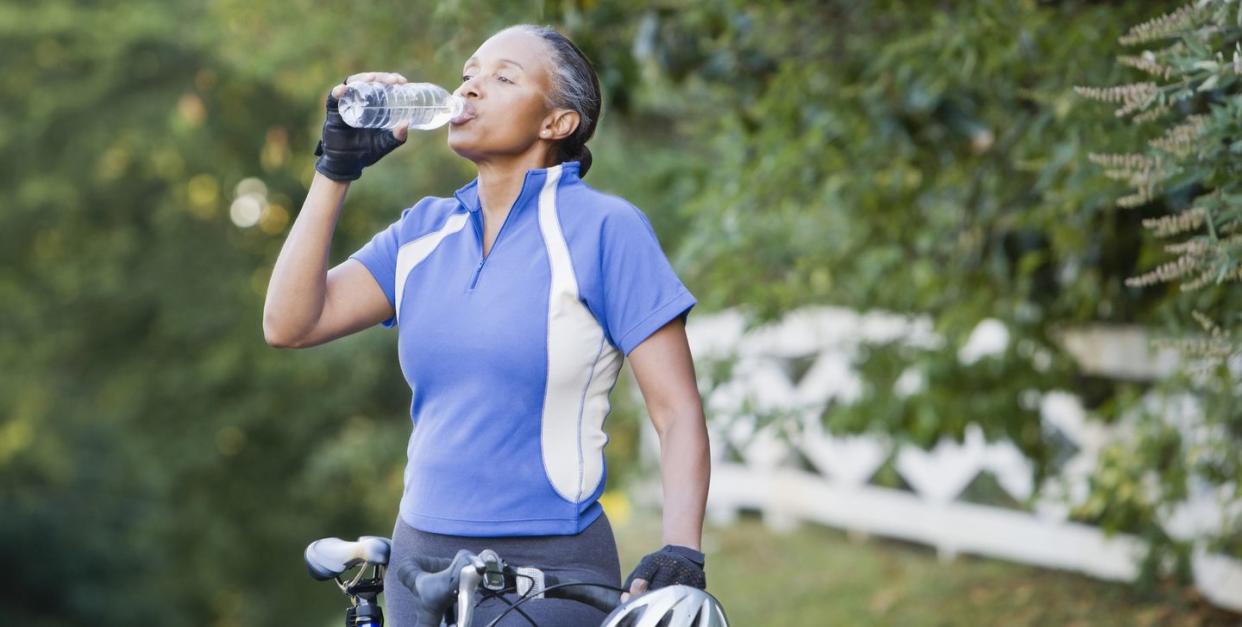Riding Into Old Age Is Beneficial to Your DNA, Which Is Good News for Various Reasons

"Hearst Magazines and Yahoo may earn commission or revenue on some items through the links below."
According to new research, masters athletes have longer telomeres (which “cap” off the ends of chromosomes and prevent them from fraying) than non-athletes of the same age.
This is important because the faster your telomeres decay (the shorter they become), the more likely you are to experience issues such as slow wound healing and a higher risk for Alzheimer’s disease.
The good news: Regular exercise slows down the process of telomere shortening.
As you age, it’s only natural to start slowing your pace, no matter how fit you are. But don’t let this small decline get you down too much—there are still plenty of reasons to keep riding as you age into the upper masters categories. A new meta-analysis suggests there’s a significant benefit to doing so that goes all the way down to the DNA level.
Published in the journal Experimental Gerontology, the research looked at 11 studies that compared telomere length between 240 masters athletes and 209 non-athletes in the same age groups. Those in the masters category had participated in high-level competitions for about 16 years on average. Researchers found that masters athletes not only had longer telomeres than their peers but also had higher antioxidant capacity, which means they showed less chronic inflammation in their bodies.
Join Bicycling All Access to become a stronger, faster cyclist!
Often compared to the plastic tips of shoelaces, telomeres “cap” off the ends of chromosomes (molecules that hold your DNA) and prevent them from fraying. That turns out to be a huge deal as you get older, because the faster your telomeres decay (the shorter they become), the more likely you are to deal with cellular aging, also called cellular senescence.
If this process becomes accelerated, as it would with shortening telomeres, it creates a range of issues, from slow wound healing to a higher risk for Alzheimer’s disease.
Additionally, being more sedentary isn’t the only factor for potentially shorter telomeres. Another recent study, published in the journal Aging, found that patients with severe COVID-19 have significantly shorter telomeres, likely as a result of how the virus infects you. That can inhibit regeneration of affected tissues, which may be why patients with severe cases develop such significant, long-term damage in the lungs.
The recent analysis in Experimental Gerontology, though, suggests that staying active, especially at a high level, could reduce these kind of risks.
Although focusing on keeping telomeres strong isn’t a usual health goal as you age—as yet, there’s no “telomere tracker” technology that can let you know if your efforts are working—it can go along with maintaining your muscle mass, keeping your joints healthy, and maintaining your bone density. All of that can be achieved through exercise, researcher Christian Werner, M.D., of Saarland University in Germany, told Runner’s World.
In research he co-authored about the effects of endurance, interval, and resistance training on telomere length, they found some differences—endurance and interval exercise seem to be especially effective—but the main takeaway was that all physical activity is a benefit to telomere protection, he said.
“Simply put, exercise slows down the process of telomere shortening, and that’s good news for your cells,” he said. “When that happens, they’ll be more resistant to stress and inflammation, two components that can age you faster.”
You Might Also Like

